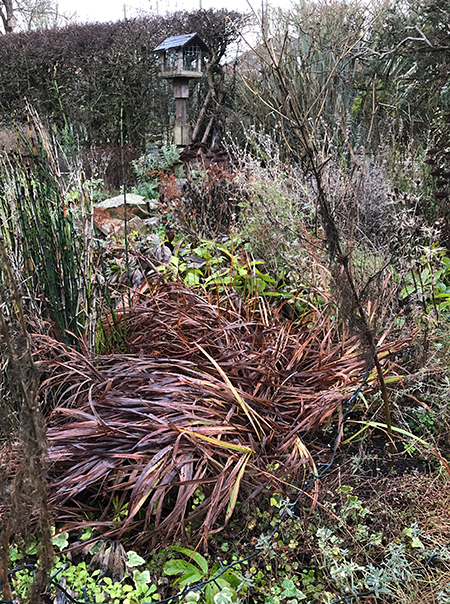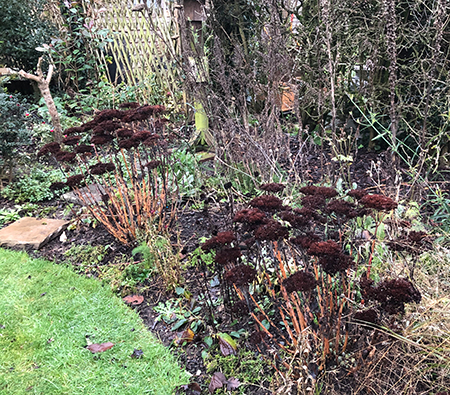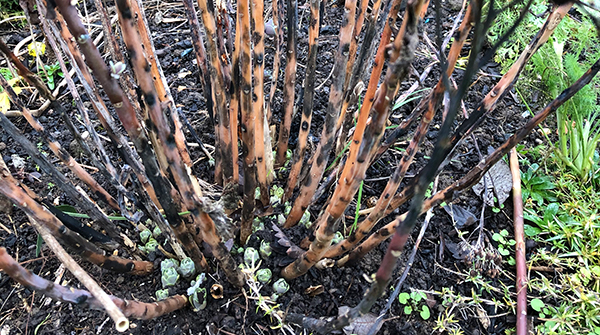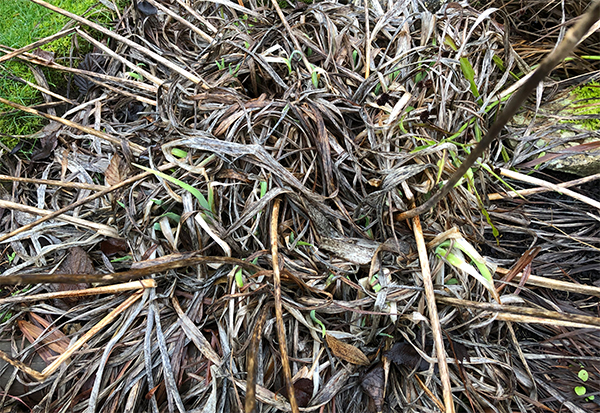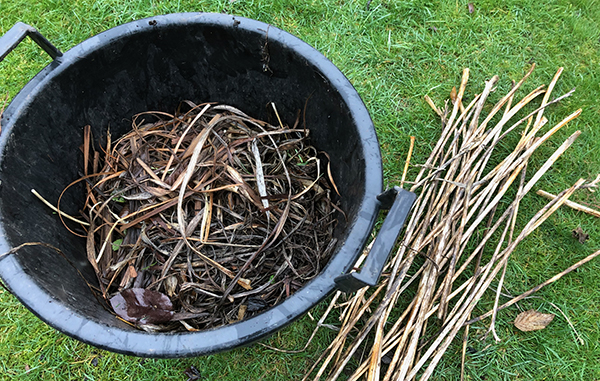Although it’s bitterly cold, and forecast to get colder (–5oC or lower overnight), at least it has stopped raining and my lawn and borders are no longer squelching under foot. So, I’ve embraced the cold dry weather to get a few garden essentials done.
Getting out in the garden, even for just a few minutes at a time, has lifted my spirits immensely … although sometimes I’ve not been able to feel my fingers or toes (brrr!).

Covering plants with fleece
My number 1 job has been to protect several half-hardy or tender plants from the looming cold snap. As a result, the garden is now dotted with ghostly misshapen humps of horticultural fleece, covering pots of African daisies (osteospermums) and blanket flowers (Galliardia).
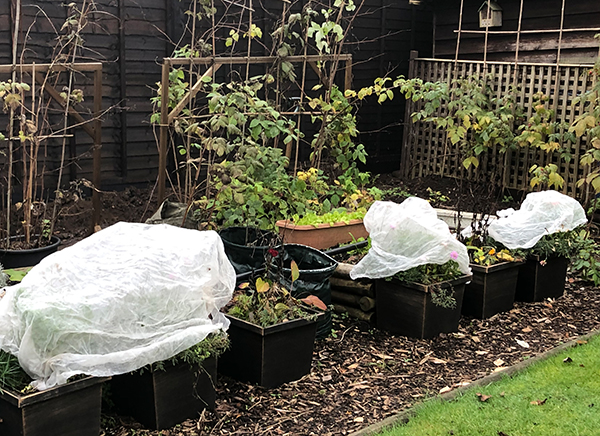
Meanwhile, my husband has done a fabulous job of wrapping up the tree fern. The crown is the key to future fronds, so he’s made sure that’s well protected with a ball of fleece, and he’s protected the trunk with some old carpet.

You can buy horticultural or ‘garden fleece’ in sheets or rolls, or many garden centres will trim off the amount you need from large rolls of the fabric.
It tends to be very light weight (usually 17g or 30g per square metre), so make sure you secure the fleece with twine or pegs, or anchor the edges down with large stones, so that it doesn’t blow away. Alternatively you can buy fleece ‘jackets’ with drawstrings or zips, which you can secure over individual plants.

Fleece allows light and water to pass through it, so you can leave it in place for a few days, but remove it once the threat of frost has passed, as it reduces the amount of light getting to the plant and creates a microenvironment around the plant that is ideal for pests.
Eco-friendly alternatives. It is worth noting that horticultural fleece is made of polypropylene, a single-use plastic product that can’t be recycled. When it eventually starts to shred or go into holes it will, unfortunately, become plastic waste.
I’ve been reusing mine for years. I’ve even washed it. But when the time comes to replace it I will be looking for environmentally friendly alternatives – if anyone has any recommendations I’d love to hear them!
Providing permanent cover
Of course, the ultimate eco-friendly cover is glass. So, it’s ideal if you are able to move plants to a permanent greenhouse or cold frame. I don’t have much space to move plants under cover in the winter, but I’m able to store a few plants in my little pop-up greenhouse and cold frames in a sheltered alcove between the house and garage.
I’ve draped fleece over my prized abutilon ‘Kentish Belle’, which is still flowering, and moved it to a more sheltered spot under the kitchen window.

Natural frost protection
As for the rest of my perennials and shrubs, they will have to contend with whatever this winter throws at them. I try not to buy too many tender plants as I don’t have the time to dig them up and protect them every winter.
As always though, I have left as much as possible of the previous season’s growth intact to protect the plant crowns beneath. This has the added benefit of looking quite spectacular when the frost does hit.


